Fishes
Media
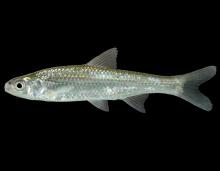
Species Types
Scientific Name
Hybognathus hayi
Description
The cypress minnow, like its Bootheel swampland habitat, is in danger of vanishing from Missouri. On the forward part of this fish's side, note the distinct cross-hatched pattern made by the dark-edged scales.
Media
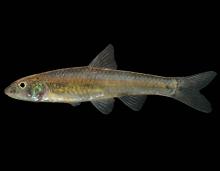
Species Types
Scientific Name
Notropis sabinae
Description
In Missouri, the Sabine shiner is known only from a short stretch of the Black River in Butler County. This slender, silvery minnow has a bluntly rounded snout that projects slightly beyond the upper lip.
Media

Species Types
Scientific Name
Notropis maculatus
Description
One of the rarest Missouri minnows, the taillight shiner is known only from a few localities in southeast Missouri, in habitats representing the last remnants of low-gradient streams and swamps once common in that region.
Media
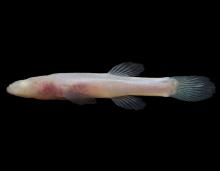
Species Types
Scientific Name
Typhlichthys subterraneus
Description
The southern cavefish has a long, flattened head without eyes. It is whitish-pink because it lacks pigmentation. The only other Missouri fish that lacks eyes is the Ozark cavefish.
Media
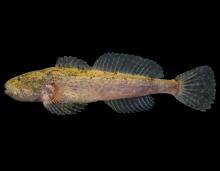
Species Types
Scientific Name
Cottus specus
Description
The grotto sculpin is a rare fish adapted cave conditions. It has recently been designated an endangered species under the Federal Endangered Species Act. It's found only in Perry County, Missouri.
Media

Species Types
Scientific Name
Amblyopsis rosae
Description
The Ozark cavefish is small, colorless, and blind. It lives only in springs, cave streams, and underground waters. It has been declared Endangered in our state and as Threatened by the U.S. Fish and Wildlife Service.
Media

Species Types
Scientific Name
Anguilla rostrata
Description
The American eel is considered an uncommon catch by Missouri sport anglers. This species is known to take natural baits and rarely takes artificial baits.
Media
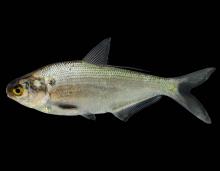
Species Types
Scientific Name
Dorosoma cepedianum
Description
The gizzard shad is one of the most common and abundant fish in Missouri. In Missouri, this schooling fish occurs in every major stream system and is most abundant in reservoirs and large rivers.
Media

Species Types
Scientific Name
Dorosoma petenense
Description
The threadfin shad occurs in the Mississippi River and its tributaries. It also occurs in mainstem reservoirs of the White River Basin and in Montrose Lake and the South Grand River in Henry County.
Media

Species Types
Scientific Name
Alosa chrysochloris
Description
The skipjack herring is an active fish, moving about continuously in large schools. It probably occurs at least occasionally in most of the large rivers of the state where its migrations are not blocked by dams.
See Also


Media

Species Types
Scientific Name
Amphiuma tridactylum
Description
The three-toed amphiuma is an eel-like, completely aquatic salamander. It has very small forelimbs and hind limbs, each with three tiny toes. In Missouri it’s found only in the Bootheel region.
Media

Species Types
Scientific Name
Siren intermedia nettingi
Description
The western lesser siren is an eel-like, aquatic salamander with external gills, small eyes, small forelimbs with four toes, and no hind limbs. In Missouri, it’s found mostly in the Bootheel and northward in counties near the Mississippi River.
About Fishes in Missouri
Missouri has more than 200 kinds of fish, more than are found in most neighboring states. Fishes live in water, breathe with gills, and have fins instead of legs. Most are covered with scales. Most fish in Missouri “look” like fish and could never be confused with anything else. True, lampreys and eels have snakelike bodies — but they also have fins and smooth, slimy skin, which snakes do not.





















